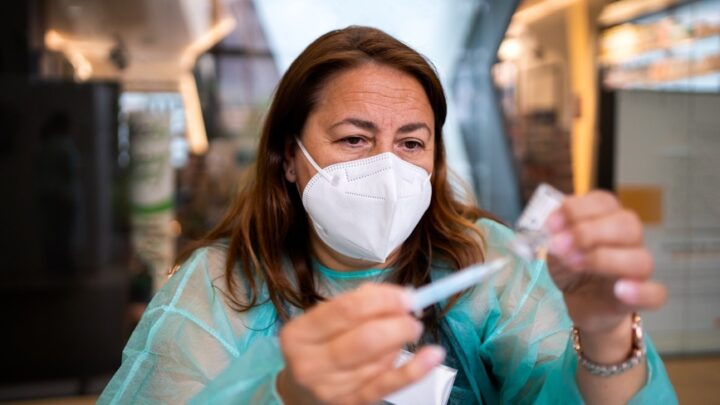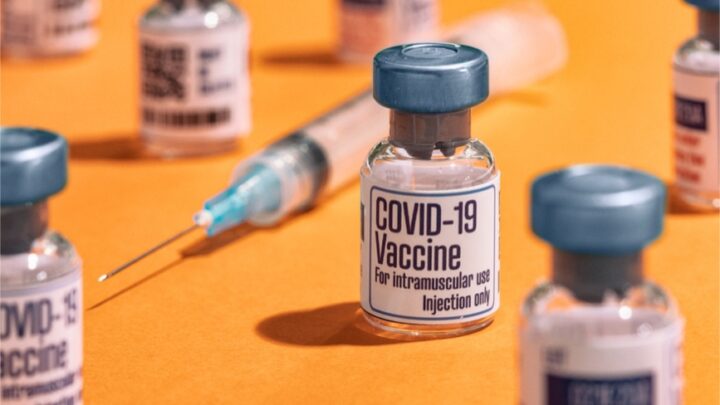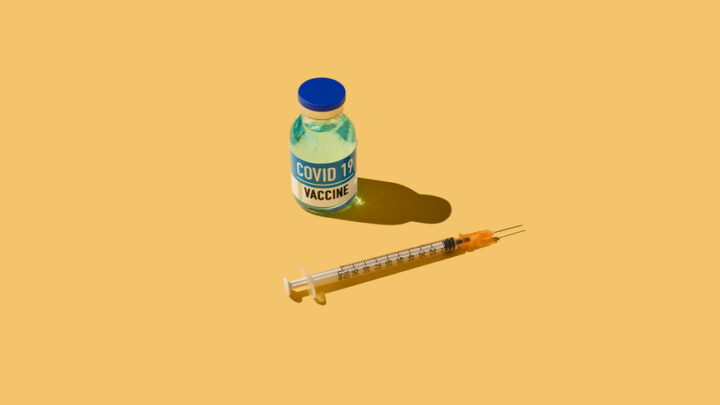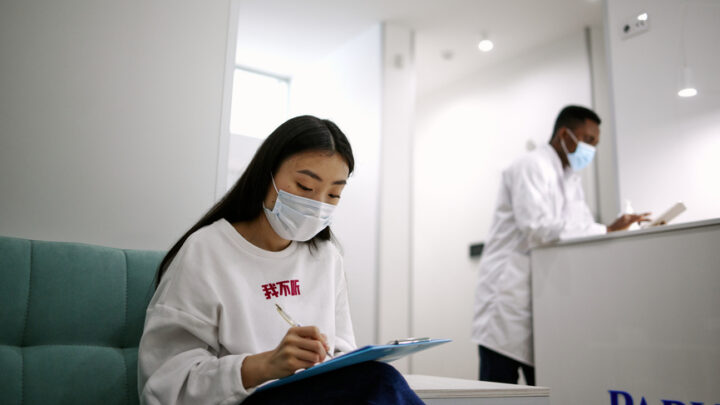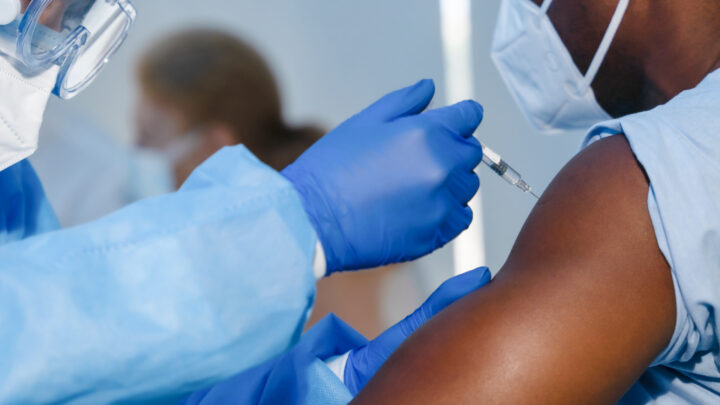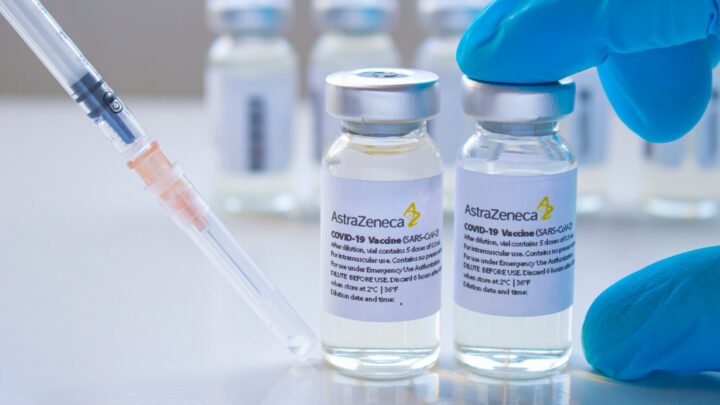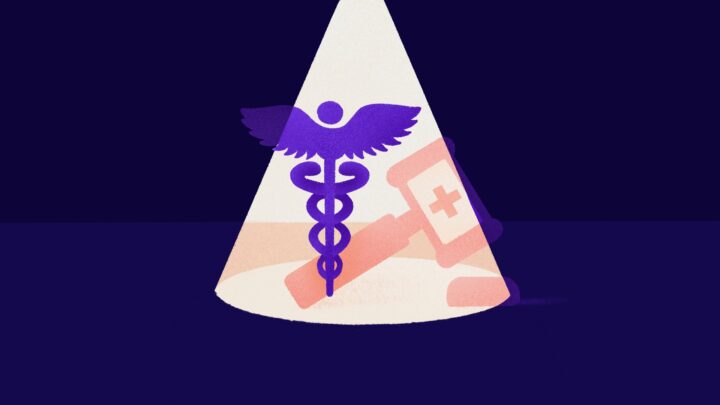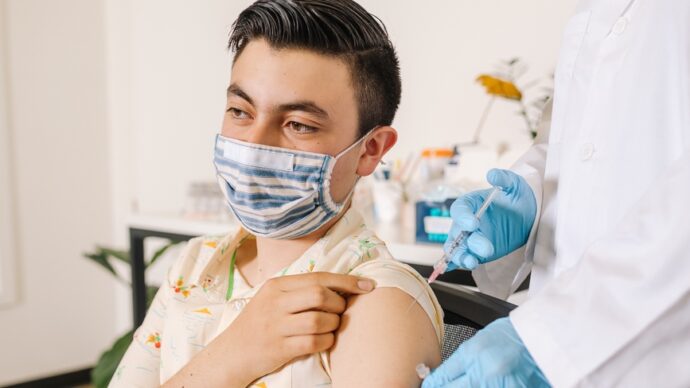
Almost 150 million people have been vaccinated in the U.S., but the vaccine rate is in decline. According to the New York Times, “Vaccinations fell sharply in the days after April 13, when health officials announced a pause on the Johnson & Johnson vaccine to investigate reports of rare side effects, and they have not fully recovered. Experts say the 11-day pause is partly responsible, but the data also shows a slowing uptake of the Pfizer and Moderna vaccines.
‘It’s a factor, but not the major factor,’ Dr. Cyrus Shahpar, the White House’s Covid-19 data director, said of the Johnson & Johnson pause.
The Johnson & Johnson vaccine has started to return across the country, but it’s too soon to say how much its use will rebound. A Survey Monkey poll by Boston Children’s Hospital shows that willingness to take Johnson & Johnson fell during and after the pause, especially among women, but that interest in getting the one-dose shot is slowly returning.
Health officials say the national deceleration was an inevitable part of the rollout, after reaching the people most eager to get their shots in most states. The decline is visible in the data for those seeking their first or second shots, but also for total doses administered, which peaked at slightly above three million shots a day, just before the pause took effect.
‘The idea that this would be a linear increase and we would hit a million shots a day, two million shots a day, three million shots a day, four, four and a half, and then keep rising at that rate, we never really anticipated that,’ said Ben Wakana, deputy communications director for the White House’s Covid-19 response team. ‘We believe we will continue vaccinating millions of people a day.’
A New York Times analysis of data from the Centers for Disease Control and Prevention shows more than a dozen states with flattening or falling Pfizer and Moderna first-dose vaccinations in early April.
These states include some that had opened up vaccination to all adults earlier in the year, such as Arkansas, Kansas and Oklahoma; Southern states with large rural populations like Louisiana and Mississippi; and places that were notably efficient early in their campaigns, like North Dakota and West Virginia.
In contrast, some states that opened up to all adults on April 15 or later, including California, Hawaii, Massachusetts, Rhode Island and Vermont, show a rising use of Pfizer and Moderna in the days after the Johnson & Johnson pause, indicating remaining demand. Most of these states have seen a subsequent decline.
In Connecticut, where the Johnson & Johnson vaccine had become popular, especially in mobile clinics, all three brands of vaccine were rising in use and then dropped off after the pause on Johnson & Johnson.
It’s hard to know with any certainty what role the pause played in the decline, said Josh Geballe, the state’s chief operating officer. ‘It surely didn’t help.’
‘But we had always anticipated we would start to see a deceleration around late April,’ he added, noting that more than two-thirds of the state’s eligible population had gotten a first shot.
‘You start running out of people to vaccinate,’ he said. ‘It would naturally start to slow down.’
C.D.C. data reveals that the declines since mid-April have been sharpest for those aged 18 to 64, who became eligible for a vaccine in most states last month. Just over 50 percent of this age group remains unvaccinated.
Health experts and officials say there’s lots of work to be done to reach those adults who haven’t yet gotten the vaccine.”
In a recent poll of about 350 global Sermo physicians, 73% said they have seen an increase in hesitancy to take the J&J vaccine since it was paused and then reinstated. And 64% have seen a general increase in vaccine hesitancy regarding all Covid-19 vaccines as a result of the J&J pause. Seventy-five percent of physicians said that among people who are willing to get vaccinated, there has been a change in preference for the brand of vaccine they are willing to accept. And 44% believe that the J&J vaccine will not fully recover from the stigma of the pause.
Sixty-eight percent of physicians said that part of the reason that vaccinations are on the decline could be that the majority of people who were open and willing to receive the vaccine have already received it.
Here’s more of what Sermo physicians have to say on this topic:
Vaccine fears have increased after the adverse effects of AztraS vaccines
Pediatrics (excluding surgery)
The vaccine should not be “required” by employers or schools/colleges for those in low risk categories whose risk from the disease is extremely low. Any side effects of a mandatory vaccine for a low risk disease would be seen as totally unacceptable to a lot of folks, including me.
Occupational Medicine
They may have paused it unnecessarily which has unfortunately caused vaccine fear for some.
Cardiology
All medications have side effects. The most dangerous side effects are very rare, statistically speaking the benefit of vaccination is higher than the very rare side effect. That’s the information the patient needs to hear, even if is difficult to swallow. Vaccination must be mandatory.
General Practice (GP)
They should have limited its use to the elderly. 65 and up
Internal Medicine
Everyday thousands of Sermo member physicians from diverse backgrounds and experiences exchange knowledge with each other. Sermo is the original medical social network that empowers today’s physicians. Over 1 million fully verified physicians across more than 150 countries come to our platform to talk with peers, participate in paid medical studies, solve challenging patient cases, contribute to the world’s largest database of drug ratings – and enjoy a few laughs along the way.
Interested in more? Check back any time and follow us on Facebook, Twitter, and LinkedIn for the latest and greatest in physician insights.
Are you a physician or healthcare practitioner? Explore the many benefits of joining Sermo’s medical community and sign up for free today.

